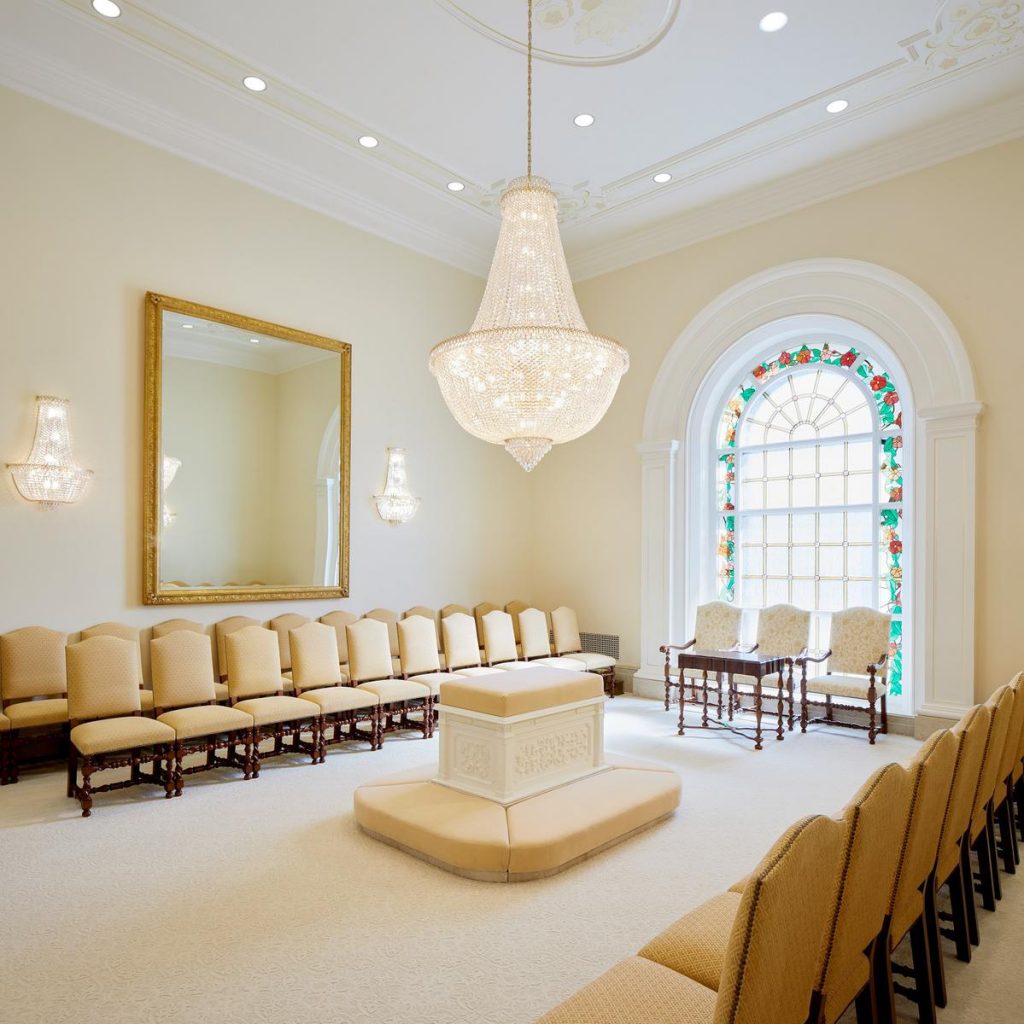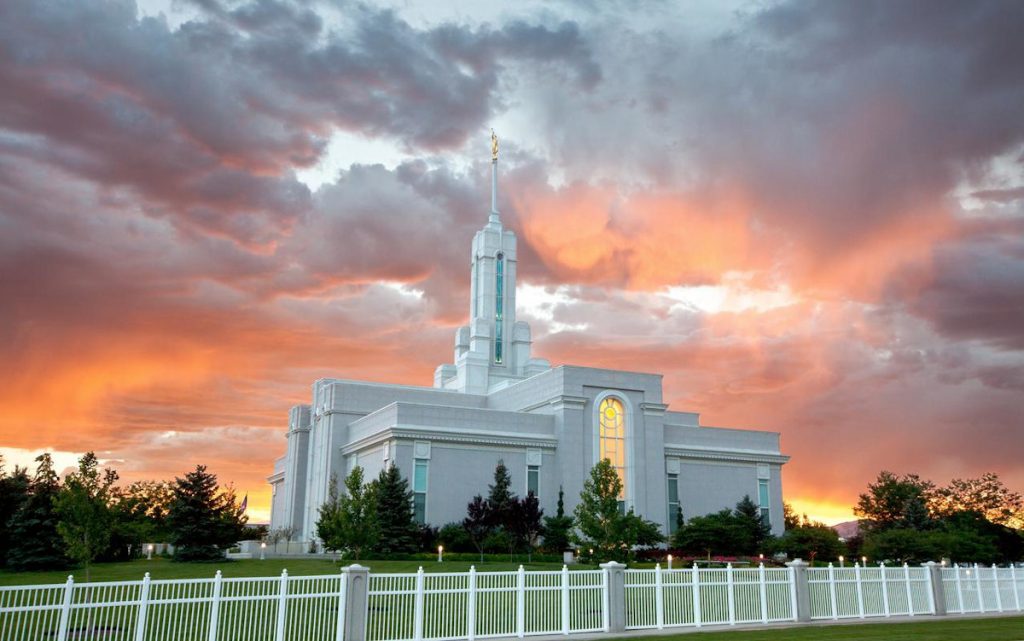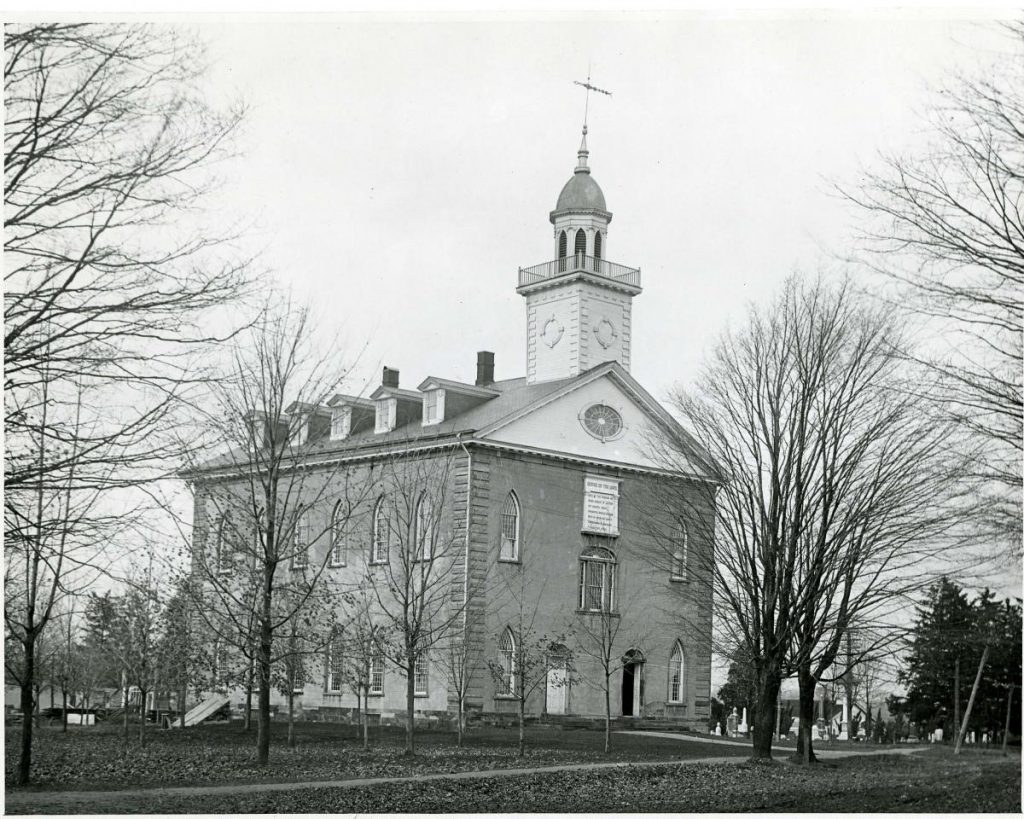These thoughts are primarily for members of the Church of Jesus Christ of Latter-day Saints, who generally understand what we do in our temples and why, and how the temple connects to the gospel of Jesus Christ as we understand it. In case that’s not you, and you’d still like to make sense of the following, let’s take a few paragraphs first and try to give you a foothold.
The Temple: Quick Background
In ordinary times Latter-day Saints meet for worship every Sunday, on our Sabbath, in the local chapel. (Sometimes we call it a meetinghouse or simply a church.) There are thousands of them scattered around the world; they are thick on the ground in Utah suburbs and cities and parts of neighboring states. In the rural Idaho village where I spent my teen years, we had one post office, no stoplights — and three large Latter-day Saint meetinghouses, including two on the same road, a mile and a half apart.
We have far fewer temples in the world, only about 200. These are closed on Sundays. A Latter-day Saint will go to the temple for his or her own rites only two or three times in a lifetime.
There, mixed with some instruction, we promise God even more solemnly than at baptism (which happens outside the temple, often in a meetinghouse) that we will obey his laws, build his kingdom on earth, and sacrifice whatever he requires of us in the process — our time, talents, means, even lives. In the temple husbands and wives are married — or sealed after a civil wedding — in a manner which we understand and believe will extend that relationship beyond death and into the eternities, if we live up to our promises (covenants) and still mutually desire that blessing when we get there.

Many Latter-day Saints are in the temple often, not for their own rites (ordinances), but to perform them as proxies for the dead, to make the same blessings available to them, should they reach a point in the next phase of their existence where they desire them. On its face this proxy work may sound strange, and explaining it is beyond the scope of this essay. (Here’s an excellent, relatively brief explanation, which you can watch or listen to in less than 13 minutes, or probably read more quickly than that: “The Redemption of the Dead and the Testimony of Jesus.”)
For the last several months, during the COVID-19 pandemic, our temples have either been closed entirely or open only to those receiving ordinances for themselves, not for the proxy work which accounts for most of our temple worship in ordinary times. Many Latter-day Saints have missed the temple terribly, these last few months. (Our regular Sunday meetings were suspended too.)
Latter-day Saints are drawn frequently to the temple for other reasons, not just the proxy work itself. Many find it a place of unusual peace, where they can briefly escape the burdens, minutiae, and distractions of ordinary life; focus on matters of eternal import; and seek wisdom and guidance from God. Many go there when great trials come or crucial decisions loom, to seek heaven’s comfort and direction. There are other places to find these blessings, but for some the temple is the best and most beloved. You’ll see people retreat to the temple grounds sometimes, when the temple itself is unavailable.
Temple ordinances — other Christians might call them sacraments — are major milestones in a Latter-day Saint life. We sometimes forget that their primary importance is that through them we enter the covenants — make the promises — I mentioned above. In our understanding, these covenants and our faithfulness in them them open the windows of heaven full wide, giving us greater access to God’s power and blessings in our lives. (Here’s the same excellent explainer, D. Todd Christofferson, preaching on that theme for 16 minutes: “The Power of Covenants.”)
The point of the following, which is adapted from remarks I’ve made from a pulpit or two, is that the temple doesn’t need to be open — I don’t need to be within a thousand miles of a temple, let alone inside it — to enjoy the power and blessings the temple can bring into my life, through the covenants I made there in 1984 and 1988, in the rites we call initiatory ordinances, endowment, and sealing.
To receive an e-mail when there’s a new post to Bendable light, enter your e-mail address here and click “Subscribe”:
The Temple Is “the Great Symbol of Our Membership”
When Howard W. Hunter became President of the Church in 1994, he invited all Latter-day Saints “to make the temple the great symbol of [our] membership” in the Church (“Exceeding Great and Precious Promises”). He also said, “The temple is a place of beauty, it is a place of revelation, it is a place of peace.”
We go to great lengths to make our temples beautiful, inside and out, and I think most people find beauty there. But beauty is all around us, even when there is no temple near.
The temple is often a place of inspiration and revelation, and the Lord has sometimes withheld particularly grand and important revelations from his people until we have built a temple in which to receive them. The Kirtland Temple comes to mind. But revelation flows freely in many other places.
Peace is a frequent experience in the temple, but we also found it elsewhere.
We might say the same of comfort, instruction, perspective, and other good things, which we often find at the temple, but which are widely available outside the temple.
The temple is a place of service too – important service which blesses many lives – but we have even more opportunities to serve outside the temple.
What we cannot do outside the temple is receive certain ordinances and, through them, enter covenants which are essential to our salvation. Likewise, only in the temple can we offer saving ordinances to our kindred dead who did not receive them in mortality, but who must eventually receive them to be saved. Whatever other blessings we may or may not find in the temple, let’s not lose sight of ordinances and covenants.
As President Hunter said, the temple is a powerful symbol. Going there worthily for our own ordinances and covenants is also an important milestone in life. But let’s not mistake a symbol and a milestone for the final goal of our journey. The temple and its covenants are not our destination; they exist to help us reach our destination, and to help us help others to reach it too.

Outfitting for the Journey
Perhaps Nephi can help me explain. In teaching the importance of baptism, and after explaining why the Savior himself had to be baptized, though he was sinless and needed no repentance, Nephi talks about a gate and a path. The gate is repentance and the baptisms by water and fire (or the Holy Ghost). To pass through this gate is to enter the “strait and narrow path which leads to eternal life” – our destination.
In case we hadn’t already noticed, Nephi next emphasizes that entering in at the gate is not the same as reaching our destination. Once we’ve been baptized and received the gift of the Holy Ghost (the baptism of fire), we’re not finished. We don’t yet “have it made.” It’s not time to relax or retire.
He explains: “Ye must press forward with a steadfastness in Christ, having a perfect brightness of hope, and a love of God and of all men. Wherefore, if ye shall press forward, feasting upon the word of Christ, and endure to the end, behold, thus saith the Father: Ye shall have eternal life.” In the next verse he adds that there is no other way to be saved in the kingdom of God. (2 Nephi 31:17-21.)
What I’m trying to say about the temple is much like what Nephi says about baptism. As wonderful as it is to go to the temple properly prepared and worthy to receive an endowment; as crucial as it is to go there for the highest of our mortal ordinances, to be sealed for eternity to a beloved companion; these are not the end of the journey. For most they are nearer the beginning.
As true as it is that we should always figuratively be turned toward the temple, and as important as the temple’s role is in turning our minds and hearts toward heaven, we miss something potentially earth-shaking, something actually life-altering, if we don’t see that the temple aims and launches us outward, into the world – in fact, to the ends of the earth.
When I filled up my car’s gas tank the other day at a local gas station, I wasn’t buying gas to use there. I was buying fuel for my journey to Idaho the next day. Likewise, our making covenants in the temple, through ordinances, is not the end of our journey. It is our preparation and outfitting for the rest of the journey, and we will keep our covenants and receive God’s blessings mostly outside the temple.
“From This Place …”
I suppose the temple can bless us in these ways to a considerable degree even if we don’t understand this. But understanding it may help us understand our lives, the gospel, and the temple better. It certainly can inform and improve our teaching about discipleship and the temple.
Next time you read Section 109 of the Doctrine and Covenants, which is the dedicatory prayer Joseph Smith received by revelation on the night before he offered it to dedicate the Kirtland Temple, notice its emphasis on the temple’s role in what we do outside the temple.

Joseph prays:
“We ask thee, Holy Father, that thy servants may go forth from this house armed with thy power, and that thy name may be upon them, and thy glory be round about them, and thine angels have charge over them;
“And from this place they may bear exceedingly great and glorious tidings, in truth, unto the ends of the earth, that [the ends of the earth] may know that this is thy work” (D&C 109:23-24).
Then he prays for blessings of protection to be upon us – which we need more outside the temple than in – and that the Lord will fight our battles for us, if we “honorably hold a name and standing” in his house (D&C 109:25-28). He speaks of the cities we will enter in our ministering, and of the deliverance, cleansing, and grace we will both carry to others there and require for ourselves (D&C 109:39-44).
Divine help and power come to us through our covenants. It is the covenants we make with God, at baptism and in the temple (and renew in sacrament meeting) which allow him to bless us in remarkable and necessary ways. Thus we qualify to “go forth … armed with [God’s] power,” with his name upon us, his glory round about us, and his angels having charge over us.
(I do not say that God blesses only those who have made temple covenants. That would defy reason and experience. I only say there are more and greater blessings available through temple covenants.)
I remember President Boyd K. Packer telling us that, if we will focus our minds on our covenants, “light will come through. Things will quickly come into focus,” he said, “and you will be able to set a true course.” We may do many of the same things we did before, but we will do them “with a renewed spirit and with greater success.” He said there will be “a renewed spiritual emphasis” and “greater dignity and wisdom” in our service, and “greater depth” in our teaching – if we focus on our covenants. (“Claiming the Blessings of the Temple,” April 1987 General Conference, Friday Evening Leadership Session, 3 April 1987.)
What might we do differently, when we focus on and better understand our covenants and their place in our lives?
We might realize that preparing ourselves and others for the temple endowment deserves a higher priority than we have often given it. We might realize that it is an even more important milestone in our lives, and more universal too, than a full-time mission. It’s not just another box to check off on the way to the mission field or the sealing room. We might realize that one of the best pieces of counsel we can give someone who is preparing for the temple is to focus on the covenants more than any other aspect of that new experience.
If we understand that the power and protection the temple in our lives comes through the covenants, we might go forth from the temple with greater confidence in that power and greater faith in its divine Source.
It’s not wrong to miss the temple when we cannot go there, or to long for a better day when we can. But there is comfort and power in knowing that, even when we’re far from a temple, or the temple doors are closed to us, overnight or for months at a time, our covenants are in force. They accompany us everywhere, and the blessings, power, and protection to which they entitle us are always available.
From the Author

Comments are always welcome, within the bounds of common civility and relevance. There’s a place for them below.
Subscribe below to receive alerts of new posts by e-email.
If you liked what you read here, please consider sharing it with someone else who might enjoy it. If you’re on Facebook, you might consider liking or following my Bendable Light page there.
And if you’re interested in my published fiction, which mostly isn’t about politics, check out my two published collections at 60 East Press.



